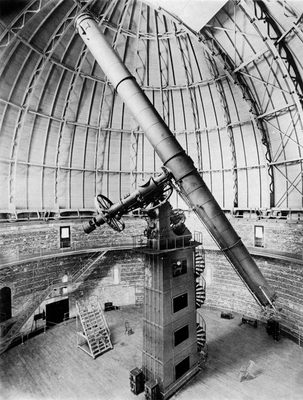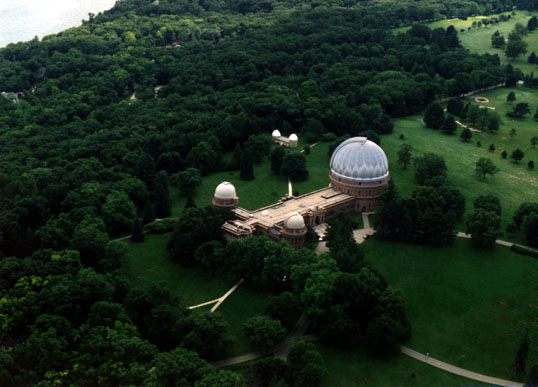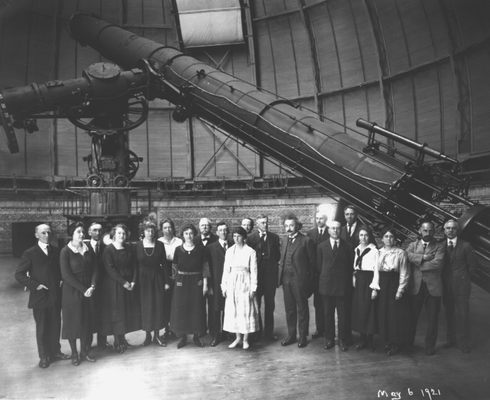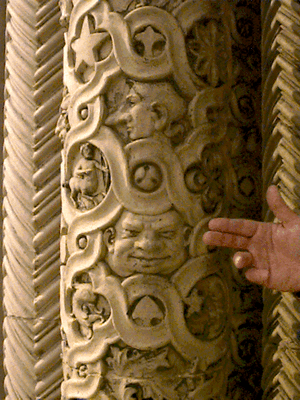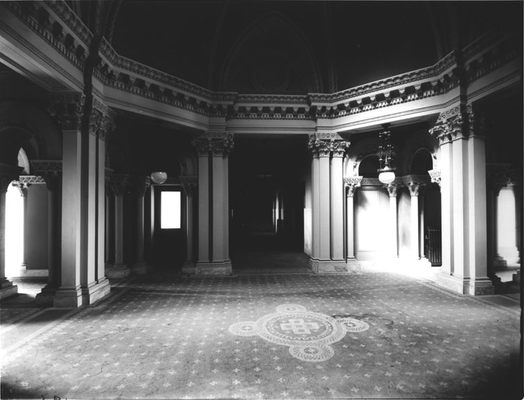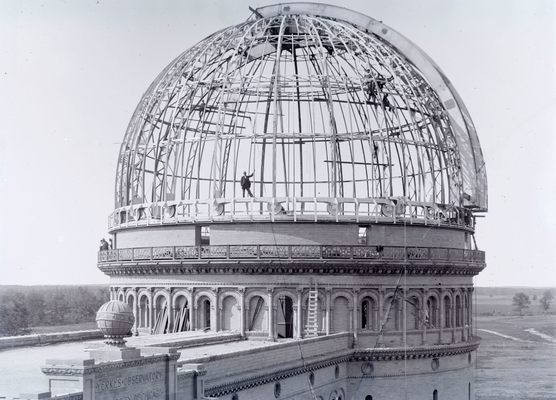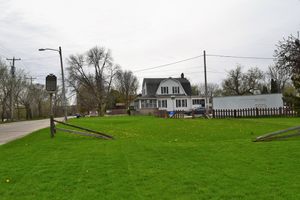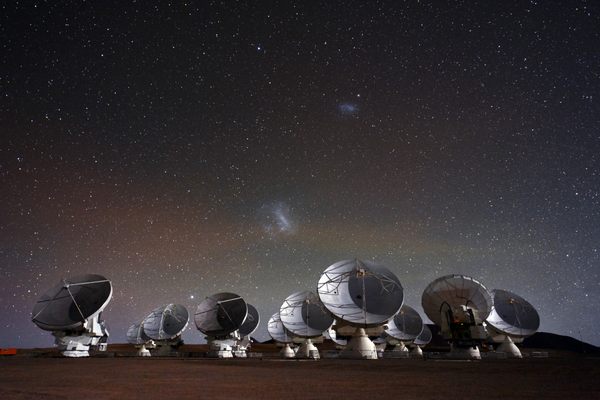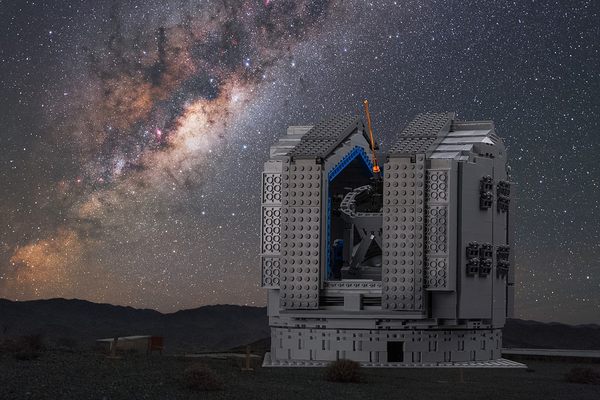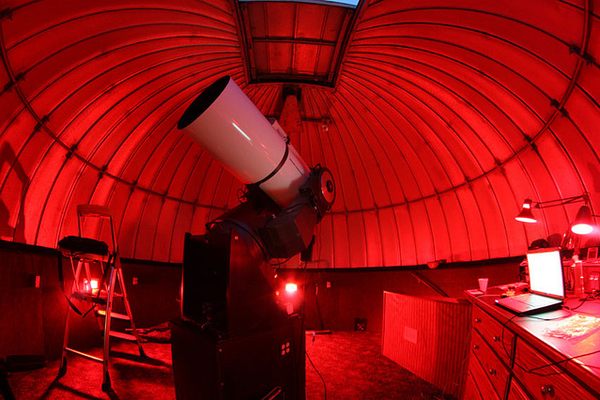About
At the end of the 1800s, the University of Southern California sought to build the world's largest telescope. In preparation, two 42-inch "blank" disks were cast by the Parisian glassmaking operation of Mantois. By 1890, however, the university could not afford to follow through with the project and the glass for the lenses was left unclaimed.
At this time, a young and entrepreneurial astronomer named George Ellery Hale saw opportunity in USC's misfortune. He appealed to his home institution, the University of Chicago, to purchase the disks and construct a new observatory to serve as home to the telescope that USC could not build. To fund his endeavor, Hale found support in the form of Charles T. Yerkes, a wealthy businessman who made his fortune with Chicago's electric railways.
Playing up to Yerkes' pride, Hale told the transit magnate that his name would live on forever if he supported the project. Yerkes, who was fighting off charges of fraud, embezzlement, and bribery at the time, saw the observatory as an opportunity to save his reputation. And so, for about $300,000, the world's largest telescope was built and Yerkes Observatory was founded in 1897.
Housed in a six ton, 60-foot-long tube atop a 43-foot-high mount, the telescope dwarfs the observer. And with a 40-inch diameter lens, the Yerkes refractor is still the largest of its kind in the world. This is largely due to the fact that lenses smear light, focussing red and blue at different places. This "chromatic aberration" is somewhat minimized because the Yerkes 40-inch telescope uses both crown and flit glass lenses. But to take black and white photographs, one must use a yellow filter, resulting in monochromatic light. Reflectors, which use shallow curved mirrors, can properly focus light. In observational astronomy's crucial transition from lenses to mirrors, Yerkes stands as the signal of an era's end.
Nevertheless, Yerkes Observatory bills itself as the birthplace of modern astrophysics. This is because it is not only the world's first university astrophysical observatory and one of the earliest examples of "Big Science" in America, but also the first observatory built with the primary function being research as opposed to merely housing a telescope. As such, Yerkes represents an important shift in observatory design.
With a long history of research, Yerkes has been the site of many important discoveries: the detection of carbon dioxide in the Martian atmosphere and the finding of Uranus' fifth moon and Neptune's second moon are just a few. The tradition continues today with important work being done on topics such as the interstellar medium, the formation of globular clusters (spherical groups of stars), and near-Earth comets and asteroids.
The observatory is also interesting for its architecture and grounds. John Olmsted, whose brother Frederick Law designed New York's Central Park, served as the landscape architect for the 53-acre site on the edge of Geneva Lake. The buildings, designed by Henry Ives Cobb, are at once a display of mythological ornamentation and a source of wry commentary. Along with the signs of the Zodiac and phases of the Moon, the stone details include caricatures of the University of Chicago's first president William Rainey Harper as well as, possibly, John D. Rockefeller, who funded the new University of Chicago. Depicted on the swollen nose of each caricature was a stinging bee, possibly insinuating that the University of Chicago's benefactor was being "stung for his money". However, Hale thought that image to be grotesque and requested the insects' removal soon after the observatory opened. One can still see outlines above the engorged noses of where the insects used to be.
Update July 2022: The observatory and grounds has been transferred from the University of Chicago to the Yerkes Future Foundation, which is in the process of restoring them into a science and arts center. The grounds are open 10 AM to 5 PM, and scheduled tours of the observatory are available on their web site.
Related Tags
Know Before You Go
Yerkes Observatory is located 70 miles northwest of Chicago, off WI-67.
Community Contributors
Added By
Published
February 17, 2010

